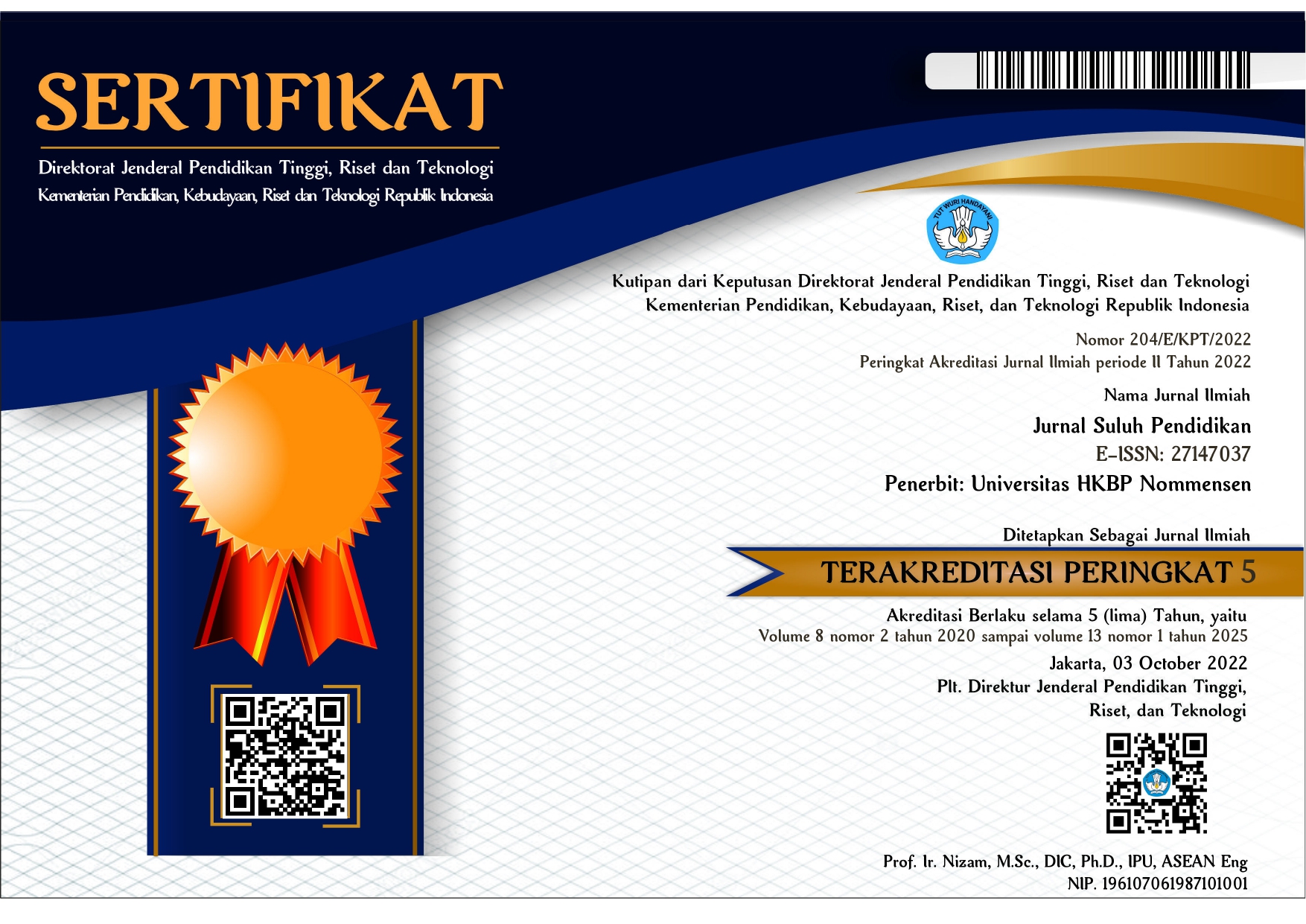THE CONTENT ANALYSIS OF CULTURAL VALUES IN READING TEXT IN ENGLISH TEXTBOOK AT THE EIGHTH GRADE AT SMP NEGERI 1 GUNUNGSITOLI
Abstract
Cultural values are the basis of thinking and views of a community group that has been studied and selected so that it is considered good, therefore cultural values based learning is very important for the easy generation of a nation. In Indonesia, cultural values in education are included in the independent curriculum and are referred to as the Pancasila student profile. These values must be applied in learning including in learning materials as a form of strengthening the cultural values of the nation's children in the midst of global progress. Given the importance of this, this study aims to analyze cultural values in reading texts contained in English textbooks at UPTD SMP Negeri 1 Gunungsitoli. The main purpose of this study is to analyze and describe the cultural values in the reading text, how the author implements the meaning in the sentence and whether the reading text in the book have met the purpose of the curriculum. This research used a qualitative approach and content analysis technique. The data analysis technique is based on the theory namely familiarizing and organizing, coding and reduction and interpreting and representing. Data collection was based on using check table instruments and document analysis. Data were collected through analysis of reading texts in the English for Nusantara book at UPTD SMP Negeri 1 Gunungsitoli. Then the data collected was processed qualitatively to analyze the patterns and meanings by the cultural values in the Pancasila student profile. The results showed that five dimensions were successfully adapted in the reading text, namely the dimension of faith, ear o almighty God and noble morals, the second dimension of global diversity, the third dimension of cooperation, the fourth dimension of independence and the fifth dimension of creativity. The only dimension that was not found was the critical reasoning dimension. The next finding is the meaning integration technique conveyed in the text sentences based on the results of the analysis, the researcher found two types of meaning adaptation in the sentences in the text, namely explicit and implicit. Between the two, the explicit adaptation technique is the most widely used by book authors while implicit is used the least. Based on these two findings, the researcher concluded that the author still needs to pay attention to embedding the value of the Pancasila student profile into the student reading text.

This work is licensed under a Creative Commons Attribution 4.0 International License.
Hak Cipta:
Penulis yang mempublikasikan manuskripnya di jurnal ini menyetujui ketentuan berikut:
- Hak cipta pada setiap artikel adalah milik penulis.
- Penulis mengakui bahwa Jurnal Suluh Pendidikan (JSP) berhak menjadi yang pertama menerbitkan dengan Creative Commons Attribution 4.0 International License (Attribution 4.0 International (CC BY 4.0)).
- Penulis dapat mengirimkan artikel secara terpisah, mengatur distribusi non-eksklusif manuskrip yang telah diterbitkan dalam jurnal ini ke versi lain (misalnya, dikirim ke repositori institusi penulis, publikasi ke dalam buku, dll.), dengan mengakui bahwa manuskrip telah diterbitkan pertama kali di Jurnal Suluh Pendidikan.




